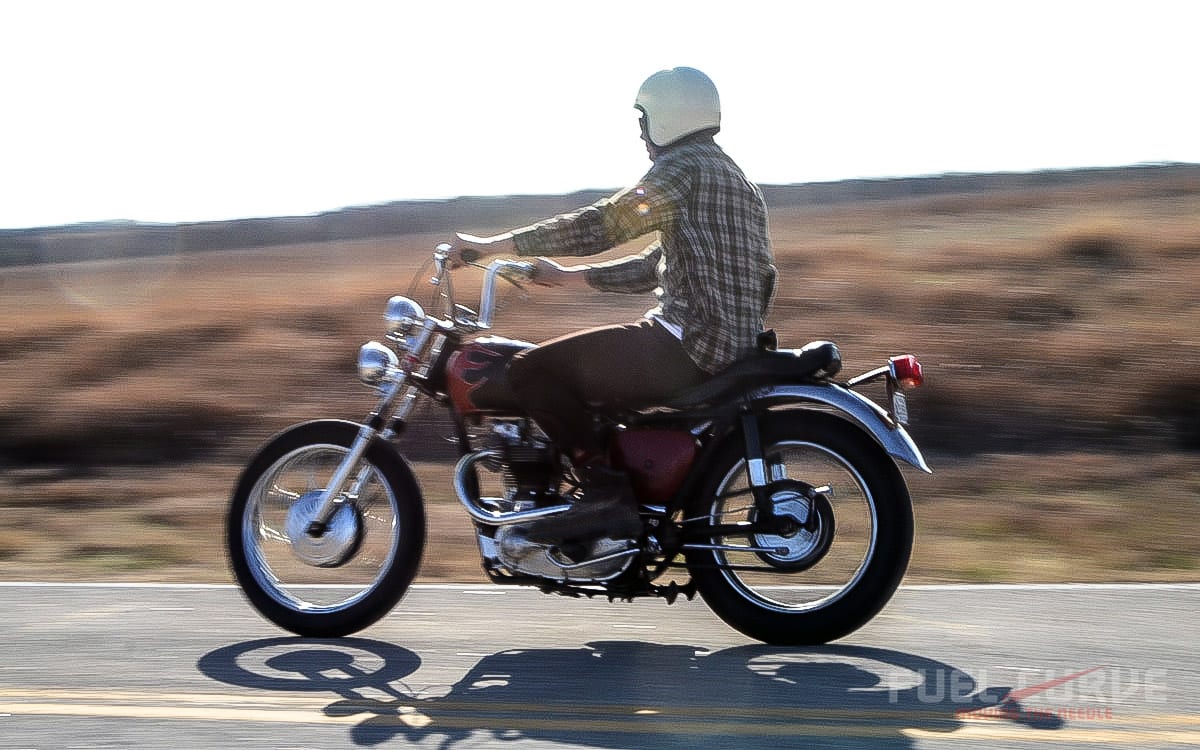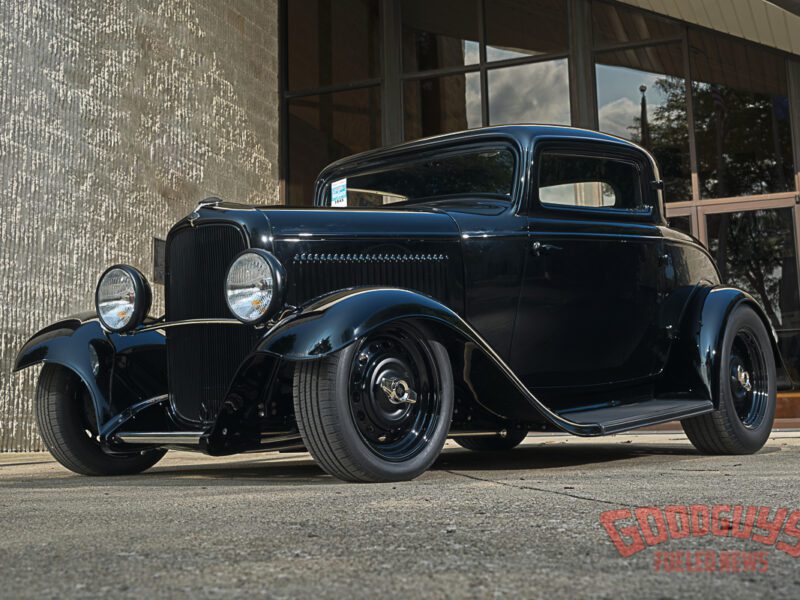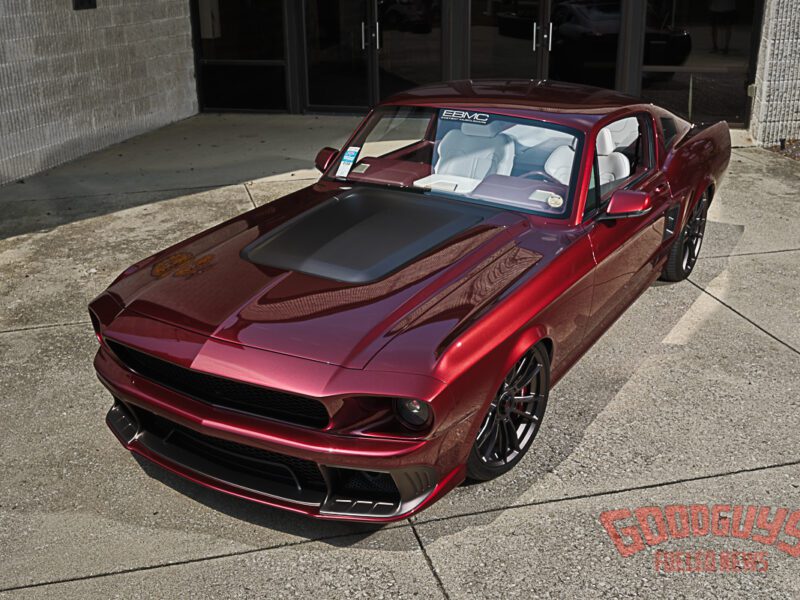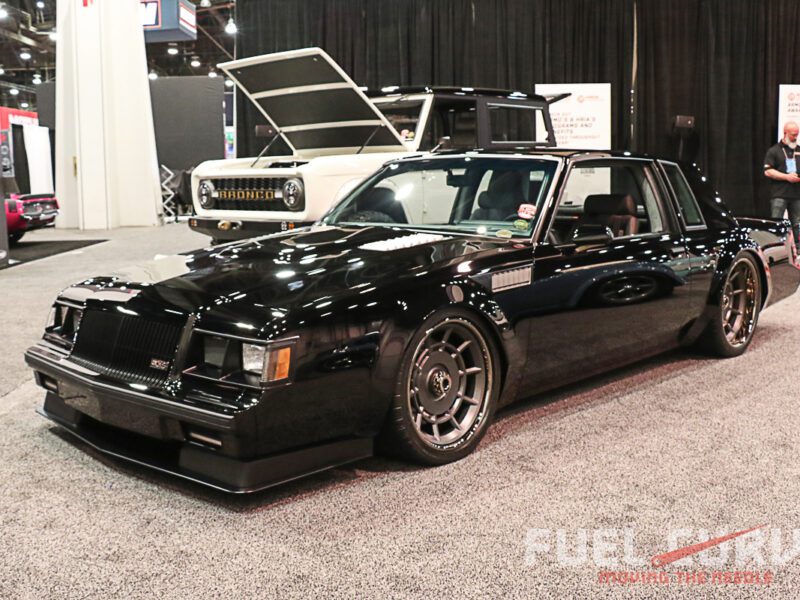1958 Triumph TR6 – Project “Spitfire”
It’s a gray Kansas afternoon when my older brother Andrew tells me to take his 1958 Triumph TR6 for a spin. We’re both admittedly cold, but can’t help but smile as we stand in the parking lot of the historic Vista Drive In—a roadside landmark with a towering neon sign that’s been a Manhattan staple since the early 60s. I walk up to the bike, situate my foot on the rubber kicker, find top dead center and strike down. It starts easily, breathing out the swoopy straight pipes and cackling with each blip of the throttle. I pull on the clutch, tap my right sneaker on the shifter, let off the clutch and away I go. I can feel the 650cc’s at work beneath me. Everything’s choreographed: the twin AMAL Monoblocs suck air and pull in fuel as the Lucas magneto hits all the right marks. The motor roars on acceleration, pulls hard through the shifts and burbles on deceleration. It’s peppy—healthy—and strong.
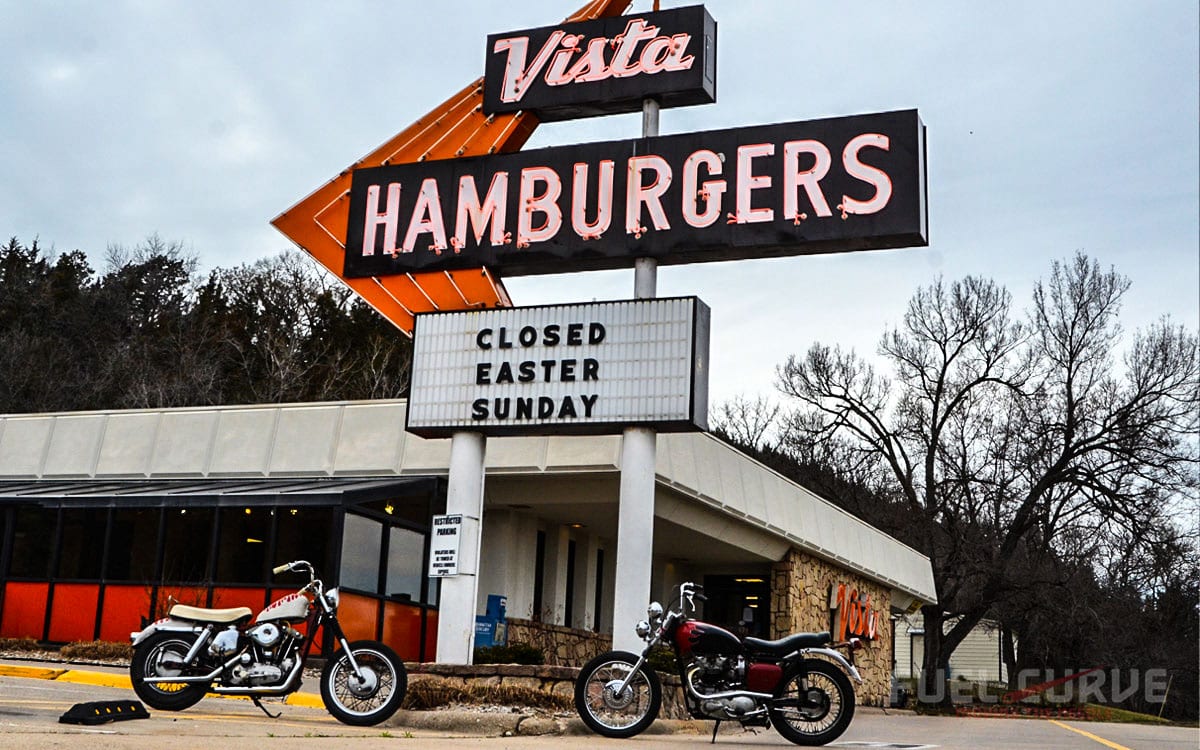
The Triumph isn’t the only one making noise. Andrew follows on his well-loved ’67 Harley Ironhead, which crackles through its slash-cut drag pipes as we haul down the main roads and roll by the chain restaurants, shopping centers and strip malls. From congested streets to two-lane blacktop, we wind our way from Manhattan to the heart of downtown Ogden.
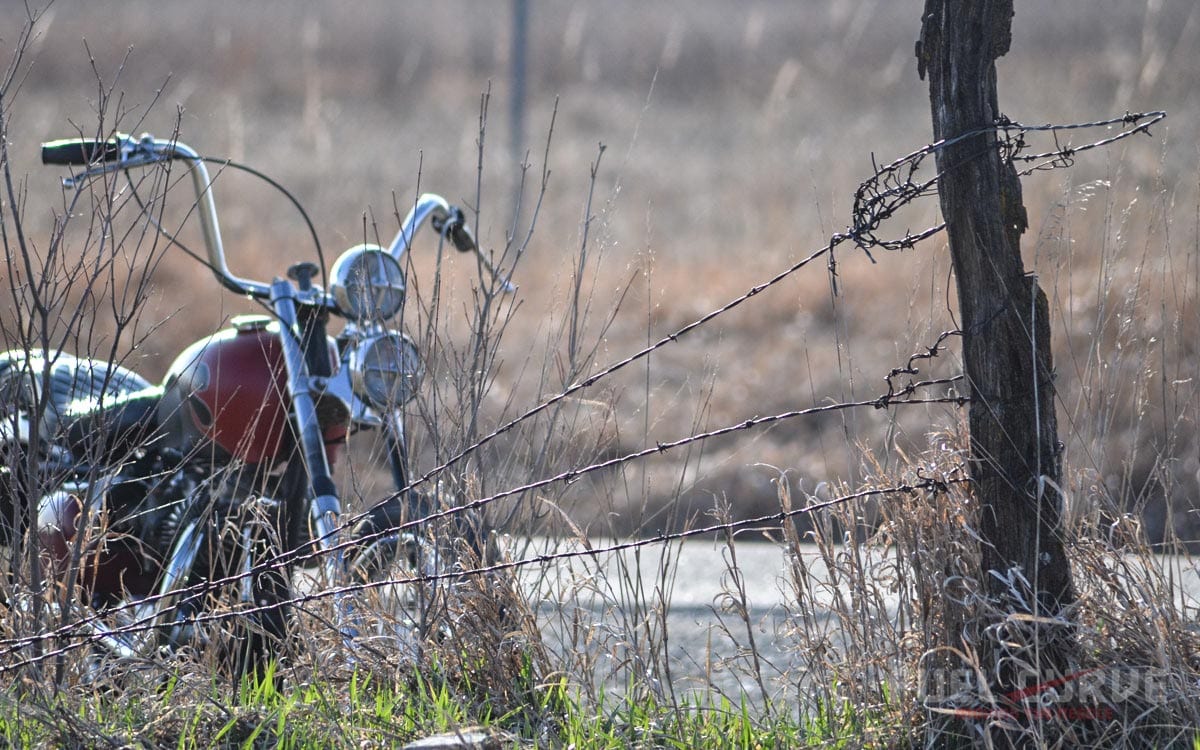
My eyes scan the surroundings. There’s the liquor store. The closed service garage. The gas station-turned-gun range. The Post Office with a plaque honoring Dwight D. Eisenhower. The two-story stone tavern that’s been there since the Civil War. We turn right at the community center with its corrugated metal siding and move through the neighborhoods with streets named after horses like Clydesdale, Stallion and Palomino. Our ride comes to an end when we reach Andrew’s house at the end of a cul-de-sac.
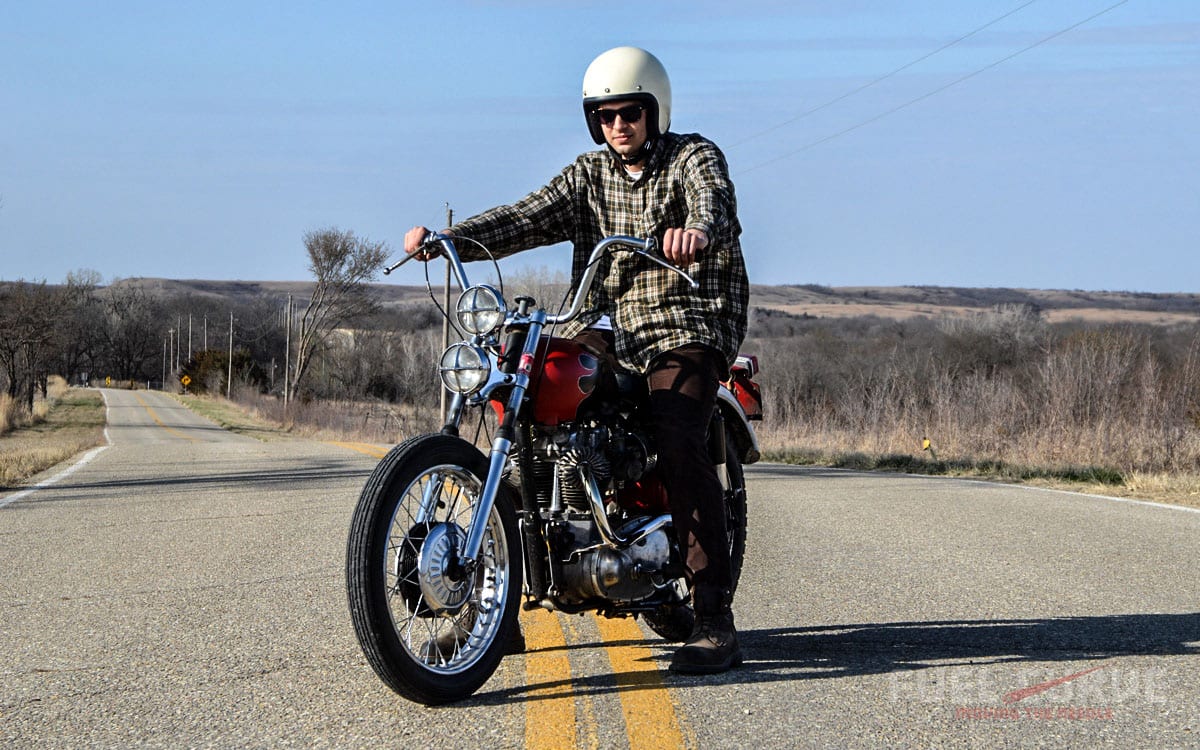
You may remember Andrew from our tale of “Lockjaw,” his 1972 Triumph T100R that he pulled out of an Oklahoma shed as a pile of parts and transformed into a fire-breathing desert sled. That project gave him a firsthand look at the nuts and bolts of building one of these things—and it also served as a prime platform to develop his signature style.
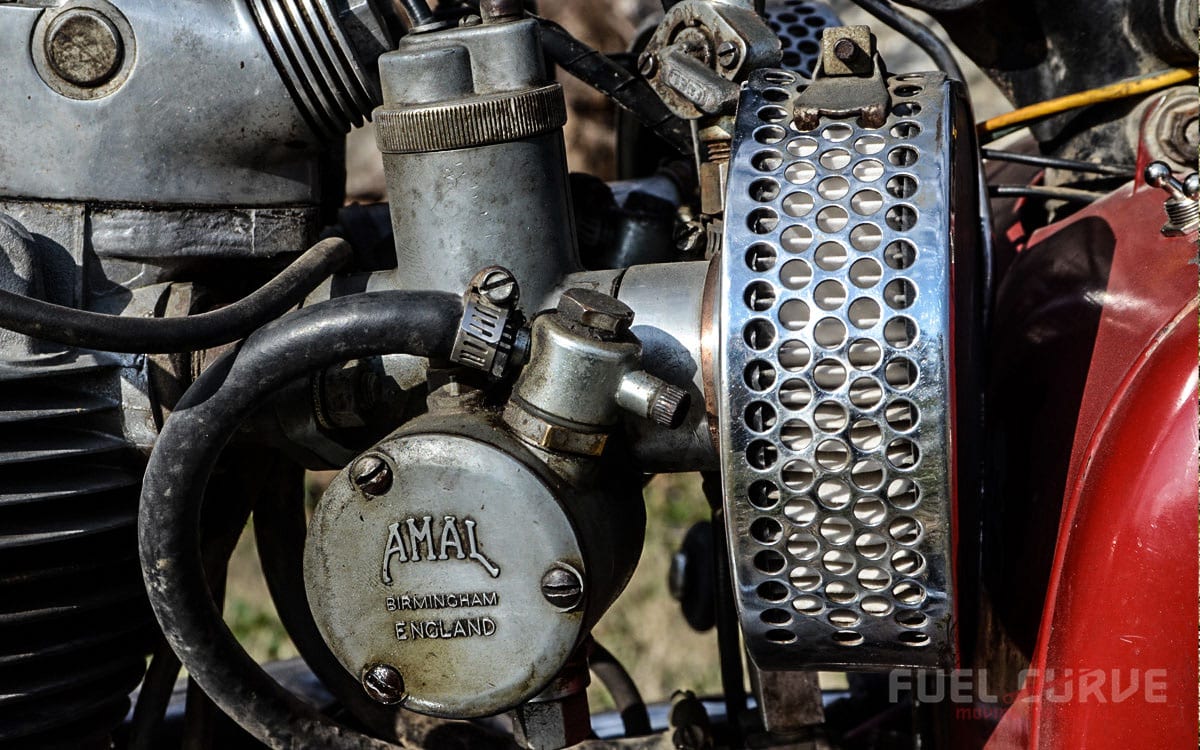
I can’t remember a time when Andrew wasn’t fascinated with history. Growing up in suburban Detroit, he stayed tuned to the History Channel and was constantly reading, researching and filling sketchbooks with drawings of all sorts. As the years progressed, so did his affinity for the machines of bygone eras, specifically cars and bikes.
Stepping into his home on the north side of town, that becomes immediately clear. Framed pictures of vintage Triumphs hang on the wood paneled walls and a chrome Pre-Unit oil tank rests on a homemade shelf. His library is filled with Rodder’s Journals, Jalopy Journals, and copies of Motorcyclist magazine dating back to the early 1950s. But the bright orange book on his coffee table is perhaps the most telling; it’s a hardbound copy of The Art of Von Dutch open to the spread of Sean Kelly’s candy blue ’58 Triumph Pre-Unit. Originally prepped for desert racing by Bud Ekins in the early 60s, Dutch gave the Thunderbird the full street/show treatment while working for Bud in Sherman Oaks, California. Andrew says this bike was the inspiration for the flamed TR6 you see here.
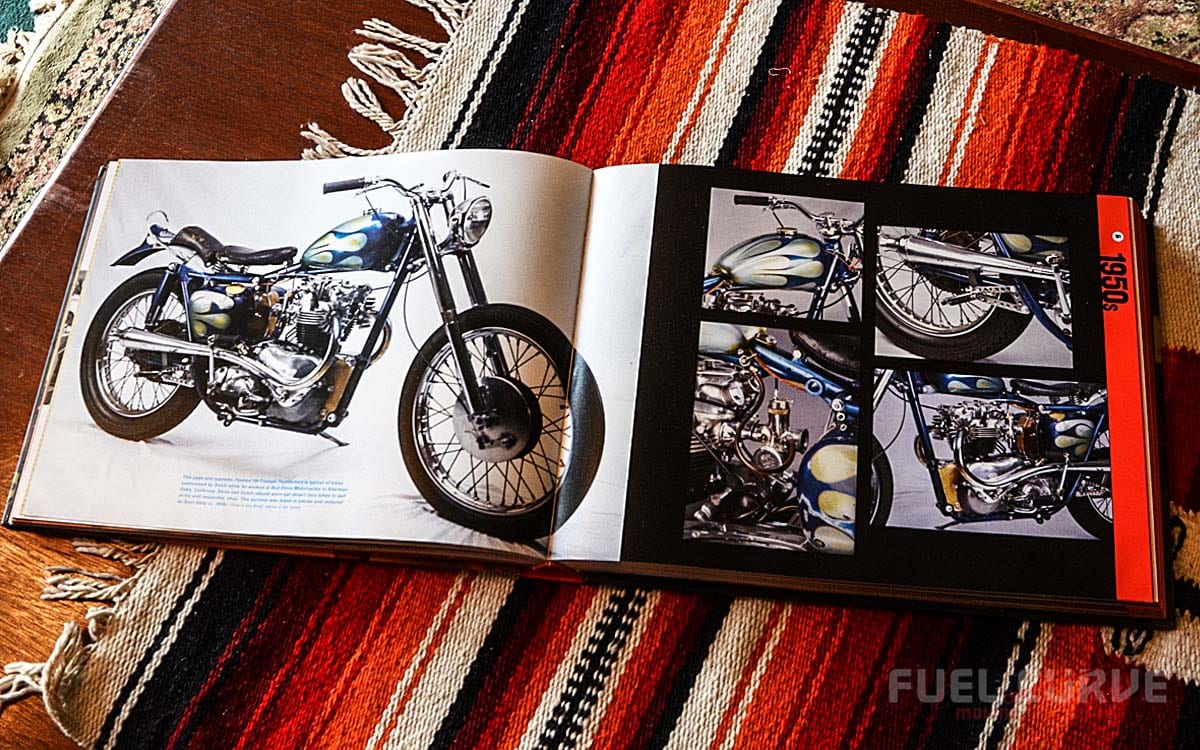
He first came across his ’58 on Kansas City’s Craigslist last fall. Even though he already had a handful of vintage bikes in his two-car garage, he knew this one was too good to pass up. The ad was simply worded and showed one very dirty, very dusty, but very complete, Triumph parked in what looked like the proverbial “barnfind” barn. He sent me the link, exchanged a few phone calls, set an appointment and hit the road the following afternoon.
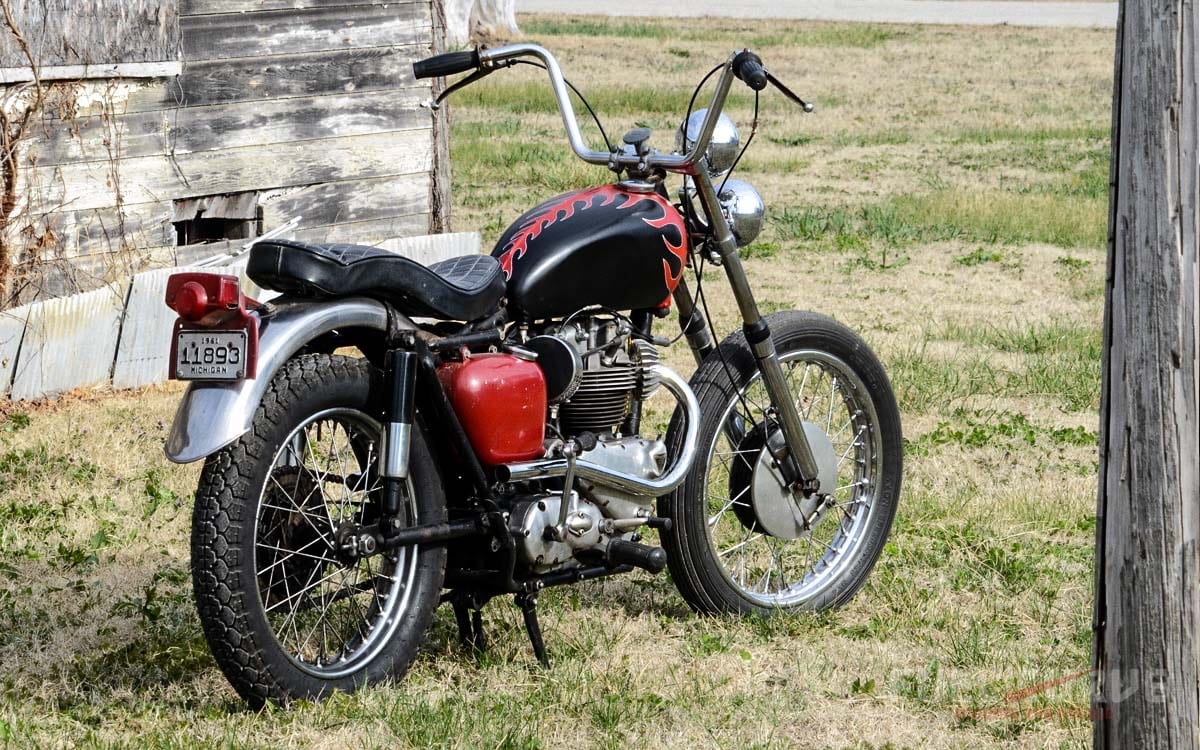
Upon arrival, Andrew was relieved to see that everything checked out and the guy wasn’t hiding in the barn in a creepy clown suit. Ron, the bike’s longtime owner had laid it down in the early 80s and hadn’t done much with it since. It was last registered decades ago and still wears a 1983 inspection sticker on its left front fork. When Ron fired the old Brit twin on the first kick, Andrew was sold. With that sale came parts—boxes and boxes of them—as well as a factory rigid ’51 Triumph Thunderbird in pieces. He loaded his truck to capacity with Pre-Unit unobtainum and made the long trek home.
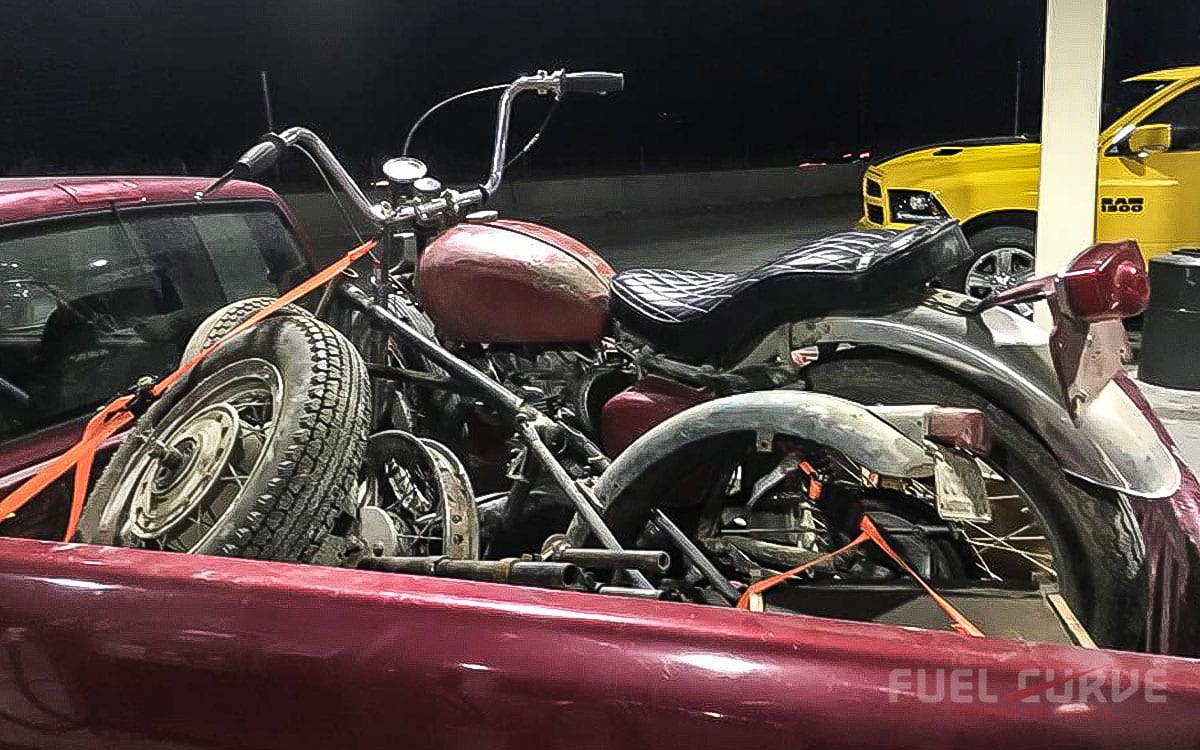
Introducing “Spitfire”
The project started with a good, thorough cleaning. “There was about 1/16th inch of dirt on every inch of the bike,” he says. “I’d say it took about 10 hours to clean the thing.” Carb cleaner, wire brushes, and steel wool all came into play, and little by little the ’58’s true colors started to show. Underneath all the grime he had himself a Bonneville-headed TR6 Trophy.

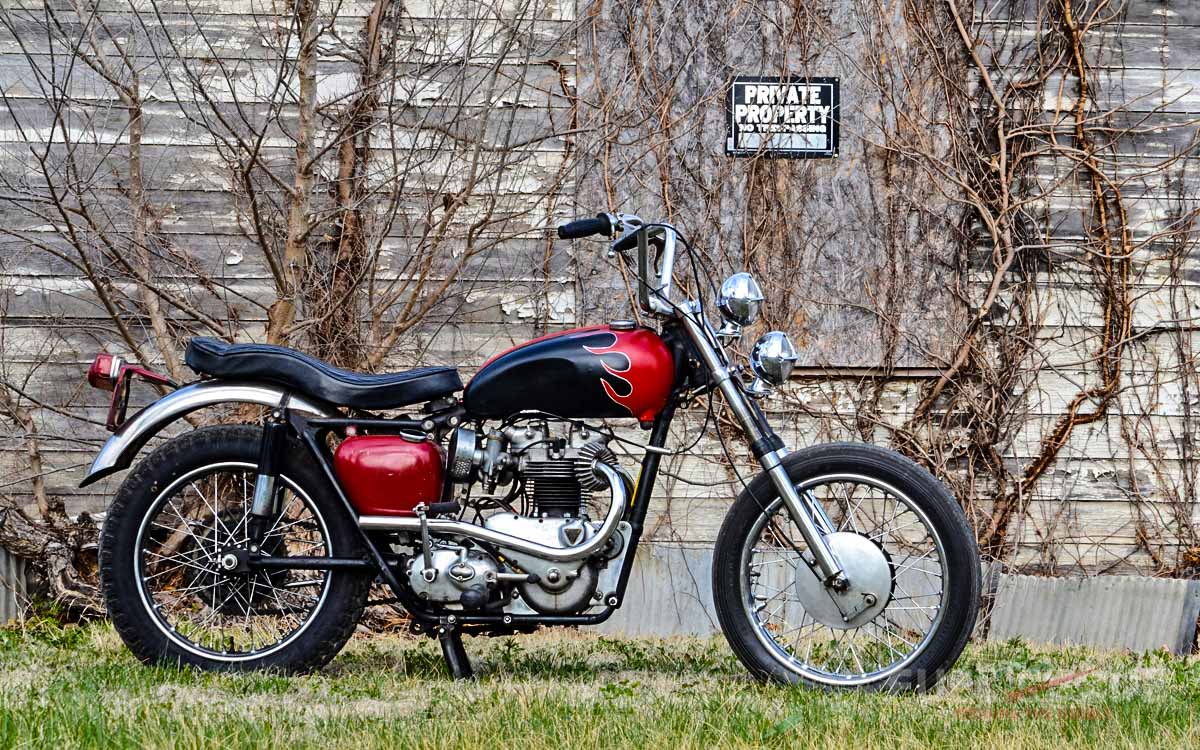
Up front, the 1958 Triumph TR6 runs stock-length forks with chromed triples and one-inch Flanders-style bars, while the 19-inch wheel is outfitted with an Avon Speedmaster. Out back, he opted for a Dunlop Gold Seal K70. At some point, the rear fender cracked and was riveted back together and, when paired with the frame’s checked and flaking original paint, gives the bike that well-worn feel. Patina, if you will.
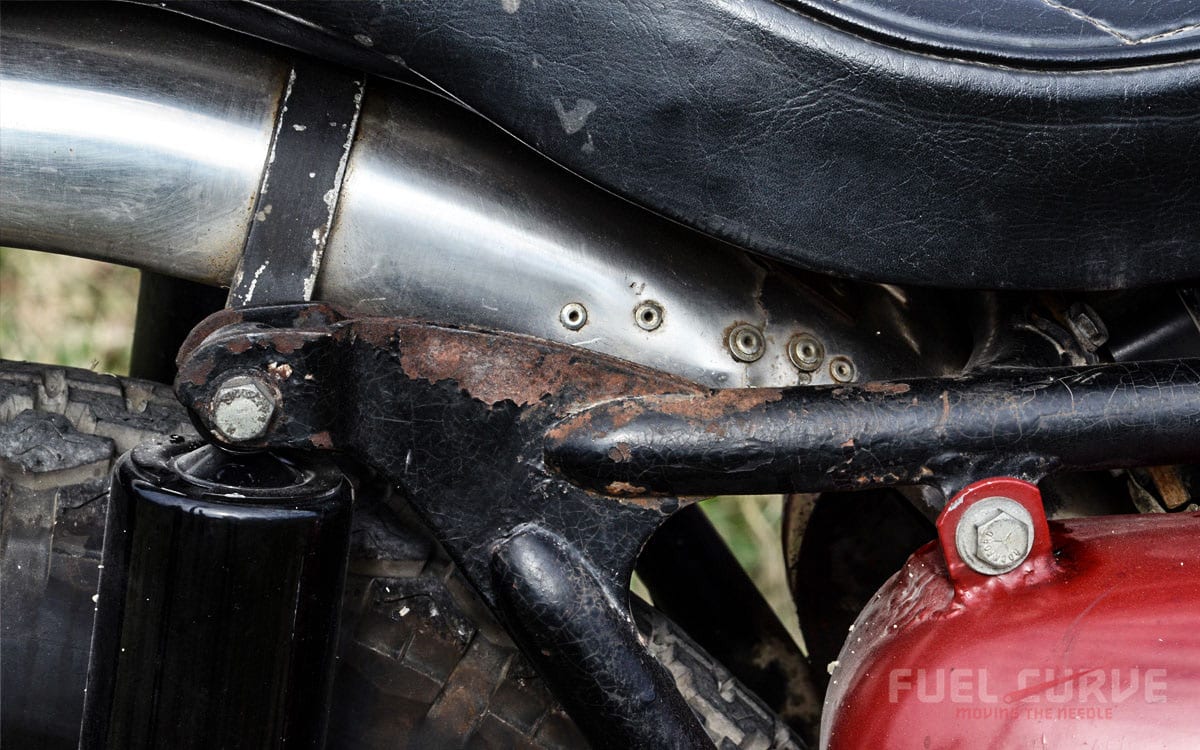
Inspired by the wild street/show bikes of yesteryear, he knew he wanted something different in the headlight department. Since the ’58 already had a bracket for dual headlamps, he tracked down a pair of 1963 Pontiac Grand Prix turn signals, swapped out the amber bulbs and wired everything up. Much like the bars and the light mount, the seat is a ’60s aftermarket piece. It’s one of Andrew’s favorite parts not only because of its diamond-stitched pattern, but also because it’s a Detroit original from Zip’s Cycle Works. The taillight, on the other hand, is stock Triumph (export model).

For the paint, Andrew turned to The Art of Von Dutch once again, this time drawing inspiration from Dick Betts’ “Concourse Body Shop” Midget racecar from 1959. In the spirit of the record-setting #97, he sprayed the black and red motif in his backyard to match the covered shocks, original oil tank and side cover. He finished everything off with silver One Shot pinstriping.
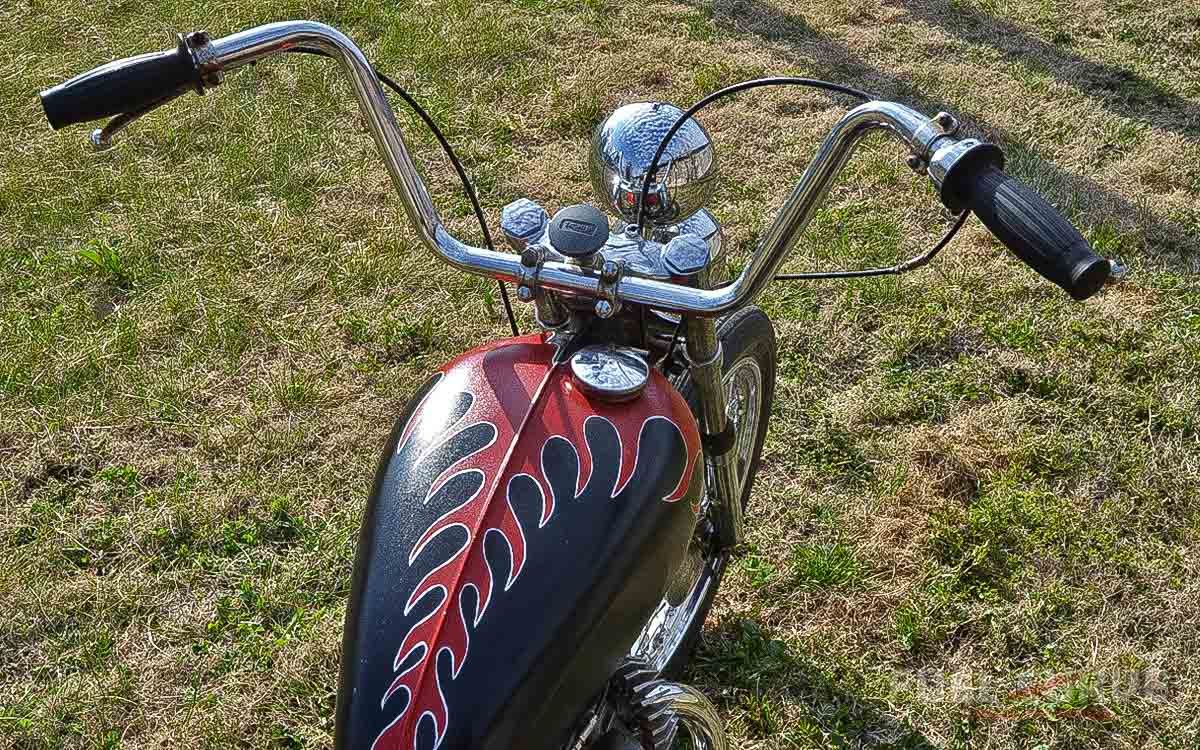
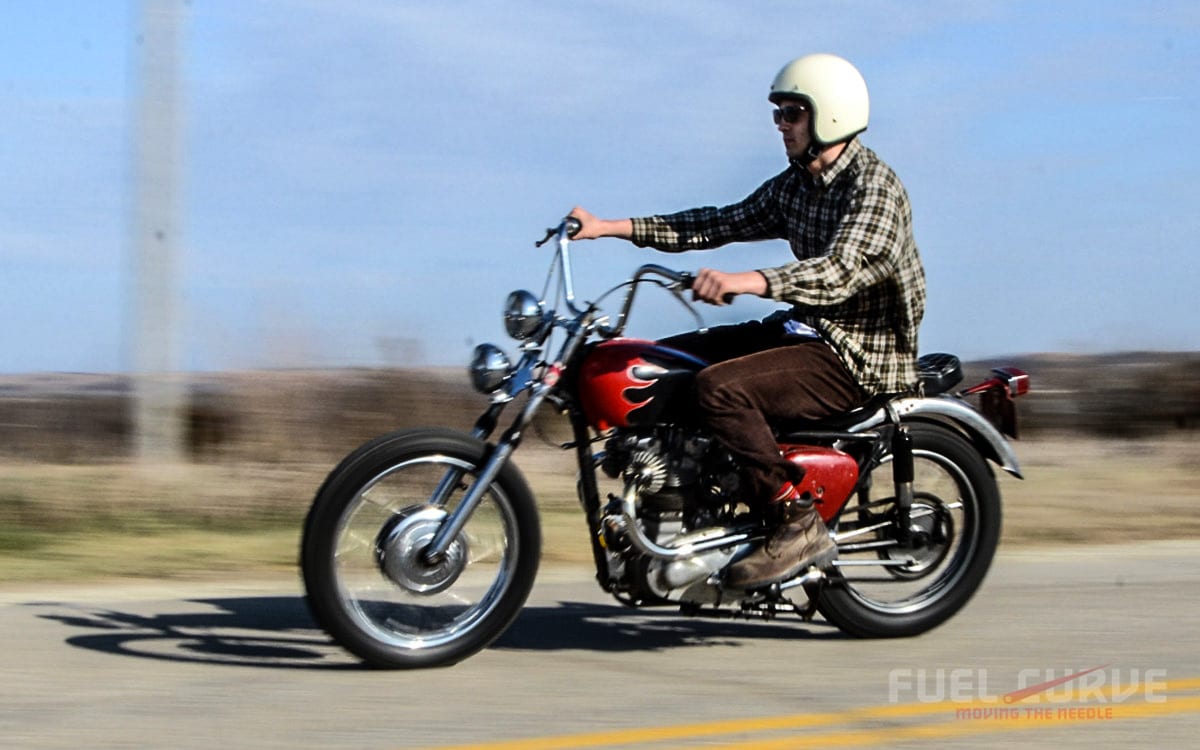
With the bike tuned and ready to go, Andrew rides year round in just about every type of weather with the exception of freezing rain. It starts easily and runs well, making you almost forget it rolled off the assembly line 60 years ago. As you wind down Kansas back roads on this particular Triumph, you can see the history and sense the pedigree. This bike has withstood the test of time and, like so many of these old machines, it’s only growing better with age. For Andrew, that was the plan all along.

